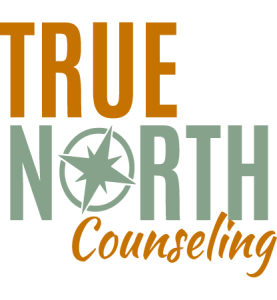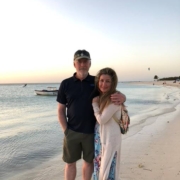Give Us this Day our Amazon Prime | Healthy Aging Series: S11 E10
I’ve never done Black Friday. Do we even call it that anymore? I looked into the origin of Black Friday, and it seems to have originated in Philadelphia in the 1960s to describe the heavy traffic and crowds that occurred the day after Thanksgiving. More recently, it has been a way for retailers to indicate that they have gone from loss to profit. And there are other days during this period, like Cyber Monday and Small Business Saturday.
The simple truth is, we are a nation of consumers. I remember as a child when our parents came to us and asked us what we wanted for Christmas. I remember in 1965, my request was for a Tonka dump truck. A Tonka dump truck. Geez, a therapist would have a heyday with that.
I don’t remember getting toys or things throughout the year. On my birthday I was given the option of getting a tangible gift or going out to eat and a movie with my parents and a sibling. I always chose the parent-birthday date night. And so, it was me and my brother Timmy, The Sound of Music, and F’s steakhouse. I chose the intangible gift, the memory, over junk.
Things have changed for Everyone
Amazon Prime has put things at our fingertips and we love our things.
It’s difficult to resist the temptation of accumulating things. Books. Clothes. Food. Pens. Electronics. Kitchen stuff. Games. Supplements. We are being programmed to want more and more. We can thank advertising, at least partly for that. And economists have put the economic welfare of our country right smack dab on our shoulders, you and me, the consumer. The more we buy, the better off our economy. Things. We need more things.
Our happiness is connected to things.
I’ve called this season, “Aging with an Attitude.” I’m offering several episodes on Stoicism as a path to tranquility.
There is a guiding principle that Stoics taught about things. Things, in their mind, included possessions, health, family, and status.
The Stoics Way of Life
Happiness, or tranquility, does not come from having more things. Happiness comes as we learn to value the things we already have.
In William Irvine’s book, “A Guide to the Good Life,” he shares several Stoic practices to help us rethink how to find tranquility. The first practice is Negative Visualization.
Irvine describes our problem as a Satisfaction Treadmill. “People find themselves on a Satisfaction Treadmill. They are unhappy when they detect an unfulfilled desire within themselves. They work hard to fulfill this desire, and the belief that in fulfilling it, they will gain satisfaction. The problem, though, is that once they fulfill it, they adapt to its presence in their life, and as a result, stop desiring it, or at least at the same rate, don’t find it as desirable as they once did. They end up just as dissatisfied as they were before fulfilling the desire.”
Be honest, how many times have you wanted something? You saved for it, worked for it, daydreamed about it, and two or three months after you’ve gotten it, you can’t find it or it’s in a tote, mostly forgotten, or eventually in the pile of stuff to be taken to Goodwill.
That’s the Satisfaction Treadmill.
What strategies did stoics provide to get off that treadmill?
1. Seneca wrote that we should consider everything we have (our possessions, our family, our health) as a loan from Fortune. “We should love all of our dear ones,” he writes, “but always with the thought that we have no promise that we may keep them forever, nay, no promise even that we may keep them for long.”
2. Epictetus advocated a “kiss them while you can,” approach to valuing family and friends. “When we kiss our child, remember that she is mortal, and not something we own, that she has been given to us for the present, not inseparably or forever.” We should contemplate the loss of family and friends. When we kiss our partners, our children, or our grandchildren, we should imagine that this could be the last time we see them. This is part of Negative Visualization. We learn to value those things that we imagine that we could lose them.
3. Contemplate our own death. Irvine suggests that we should live as if this very moment could be our last.
“As we go about our day,” Irvine writes, “we should periodically pause to reflect on the fact that we will not live forever, and therefore that this day could be our last.”
I don’t think he means that we should be thinking all day long that every second could be our last. I think this is being too self-absorbed and prevents carefree living. But I do think we should periodically stop and reflect on the gift of life, and contemplate our death. Take a moment. Really. Now contemplate your death. I will.
4. Imagine losing your material possessions, your job, or your home.
As I write this, California is on fire. People have lost everything. Their homes, their pets, their favorite chair and coffee table and their favorite pillow. All in a matter of days.
A few years ago, a tornado ripped through a small town in Kentucky, leveling houses and businesses and killing dozens. It can and will happen to someone next week or next year.
Knowing that should give us pause. It should help you value the things you have, the children and grandchildren you have, and your job.
Tranquility is a wonderful Attitude for Aging. Tranquility helps you combat cynicism.
In the Tarot Deck (RWS), the Tower Card is a warning to avoid building your material “Tower.” There is a lightning bolt that destroys the Tower, symbolizing an epiphany. The epiphany is, don’t fall in love with things. Like this Tower, things are fleeting.
To find Tranquility, start by thinking of a life without the things in your life.













